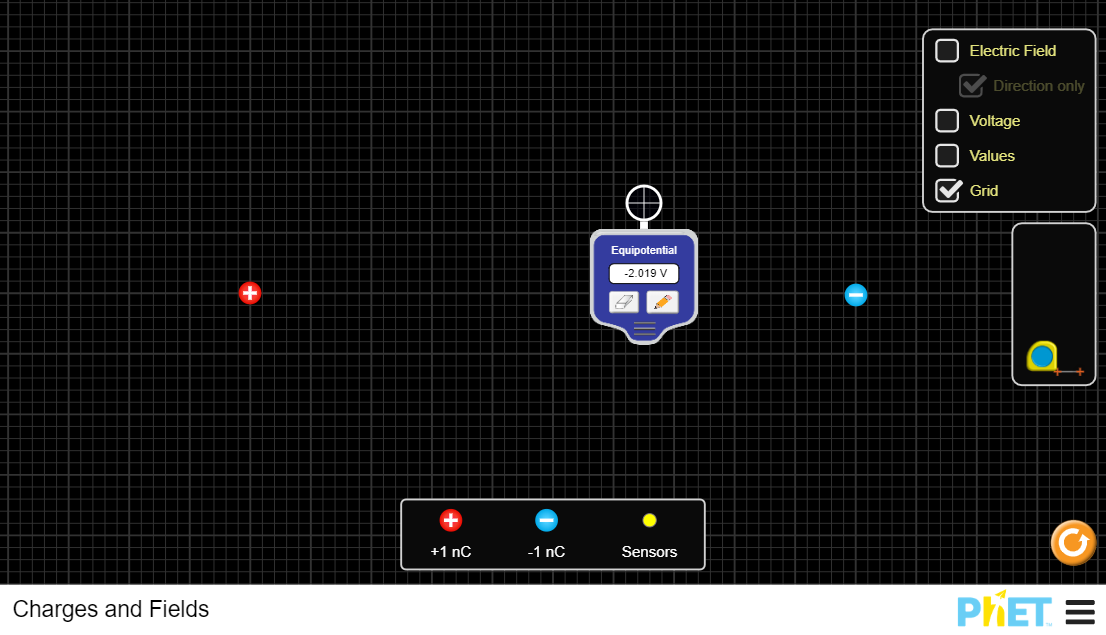Physics 2212, Sim 05: Electric Potential and Field
Eric Murray, Fall 2020
Question these experiments will enable you to answer: What is the arrangement of electric equipotential curves and field lines near an electric dipole? Does the electric field magnitude along the line between the two charged particles of a dipole vary linearly with 1 / x2 + 1 / (d - x)2 ?
Features: Electric point charges are simulated. The resulting electric field may be visualized, and tools are available to measure distance and potential, and to visualize electric equipotentials.
 Preliminaries: Open Charges and Fields simulation. Uncheck
Preliminaries: Open Charges and Fields simulation. Uncheck Field
, but check Grid
and Values
. Position ±1 nC charges 5 m apart on the same horizontal line. Drag the potential measuring tool from the toolbox.
Experiment 1—Qualitative Equipotentials and Field: Using the potential measuring tool, find a location where the potential is as near -16 V as you can. Click the pencil on the tool to automatically sketch the equipotential line.
Repeat for potentials of -12, -8, -4, 0, +4, +8, +12, and +16 V.
Now check Field
. Is the relationship between the equipotential lines and the field vectors as expected? Make a screen capture (you may use the hamburger
☰ menu at the bottom right) to submit, and for you to consider while writing your discussion.
Experiment 2—Quantitative Field Determination: Let the zero of position be at the location of your negative charge, and your positive charge be at +5 m. Find the electric potential every 25 centimeters between the charges. Calculate the average electric field magnitude between each measurement. The value of 1 / x2 + 1 / (d - x)2 has already been calculated for you, assuming x = 0 m at the center of the negative charge, and d = +5 m.
Graph the calculated average electric fields as a function of 1 / x2 + 1 / (d - x)2. Fit a straight line to the data. Report the slope with its uncertainty, and calculate the charge on each electrode with its uncertainty. More importantly, be sure to look at your graph, and think about whether the straight line fit is appropriate.
Summary: Review your worksheet. Think about the goals of these experiments, your results, and the expectations from theory while writing your discussion.
